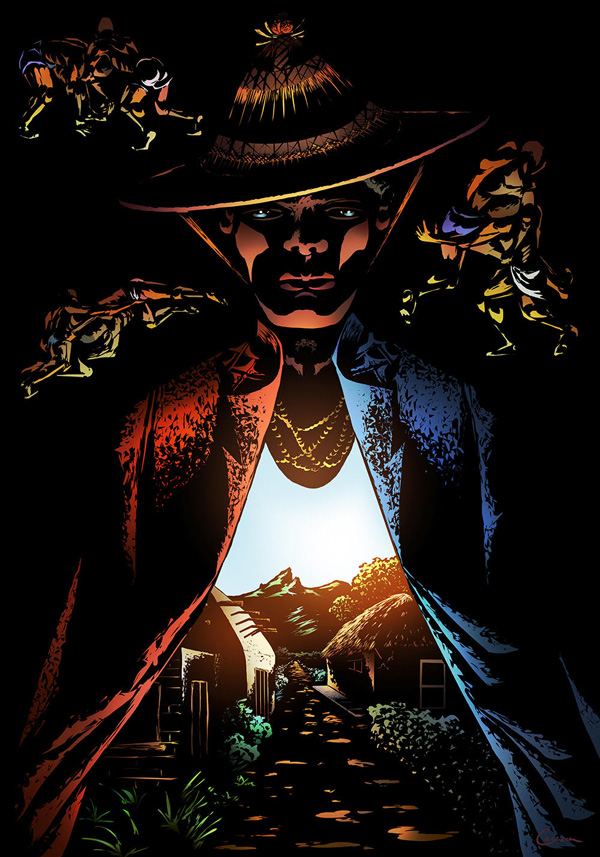
The Red and the Blue Coat by Philip Carerra from his book The Art of Mischief: Illustrating the World’s Most Notorious Troublemakers
Originally from Chicago, Philip Carrera is a self-taught artist with a knack for storytelling. He’s spent most of his life in Southern California, and recently attended a workshop at the Getty Villa that inspired him to illustrate and self-publish a book of art prints called The Art of Mischief: Illustrating the World’s Most Notorious Troublemakers, which he posted on #GettyInspired. The book is the first of a seven-part series about fairy tales, myths, and folklore from around the world. Philip told us he’s taken some art classes here and there over the years, but he can really thank books, films, museum visits, and workshops for motivating him as an artist.
But why fairy tales and folklore, I asked? “Thousands of years ago, people created stories to explain why it rains, where their food comes from, and what the stars mean,” Philip told me. “Their reasons for doing so are the same reasons why people climb mountains, cook familiar dishes with different spices, or take unfamiliar routes home from work today. We all have an innate sense of wonder.”

How Raven Brought Light into the World by Philip Carerra from his book The Art of Mischief: Illustrating the World’s Most Notorious Troublemakers
Like most artists, Philip has done it all. Early on he worked as an ad copywriter, then taught third grade. As a teacher, Philip really enjoyed reading aloud with his students and showing them how to tell and write their own stories. After teaching, he went on to “make cartoons,” in his words, meaning he taught himself how to animate digitally in order to find a job as a professional animator.
Travel is Philip’s favorite escape, as well as a hobby that inspires and contributes to his artwork. And if he’s not off visiting another part of the world, he’s trying a new dish or taking a class that will help him expand his horizons and see everyday life differently. “While living in New York, I took an African drumming class. I ended up with bruised thumbs and a great experience. During my time in Chicago, I took sailing lessons. I capsized so many times, I spent more times learning how to get back into the boat than actually learning how to sail. Oftentimes, my way of relaxing is placing myself in uncomfortable situations,” Philip said.
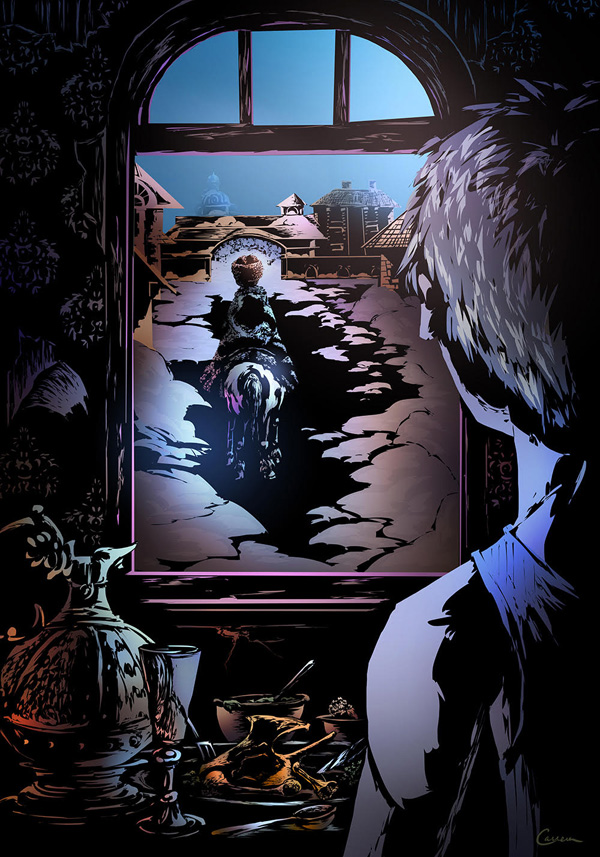
The Tale of the Peasant Demyan by Philip Carerra from his book The Art of Mischief: Illustrating the World’s Most Notorious Troublemakers
Philip’s Creative Process
Philip describes the steps in his process like so:
- I begin by gathering stories that revolve around a certain theme. For instance, with my first book, I assembled and read several stories featuring tricksters and troublemakers, and chose the ones that resonated with me.
- In my sketchbook, I quickly rough out thumbnails of what I imagined while reading each story. It’s important that this stage happen quickly, because I want the final images to be as close to my first impressions as possible. The whole time, I’m thinking of mood and emotion, which leads me to color and lighting.
- I then dive right into digital, beginning with a black and white pass to establish light and shadow. This stage is super fun, because there is an element of surprise. As is with the final stage, adding the color, always pushing for dramatic lighting. I love the lighting of artists like Gustave Doré, Caravaggio, and Rembrandt.
Philip is currently working on The Art of Mischief volume 2, titled The Art of Desire.
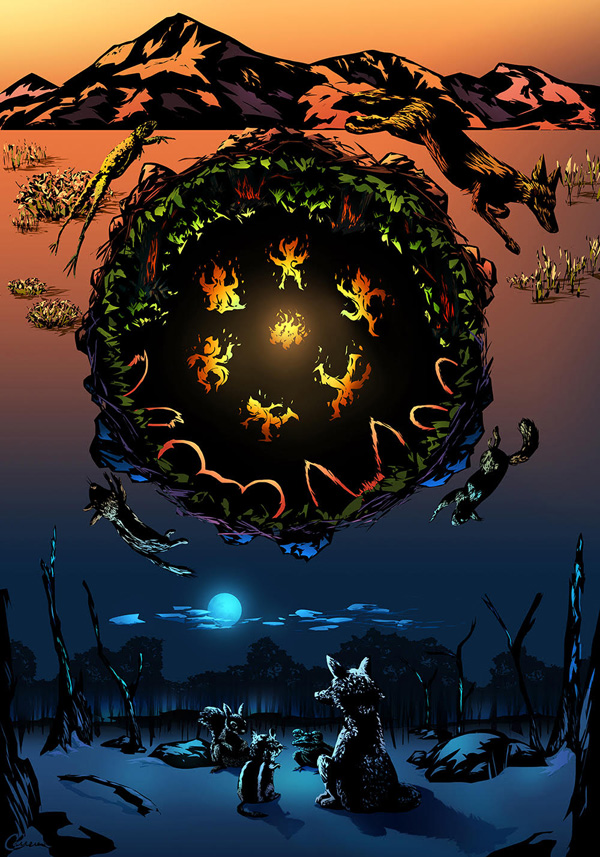
Coyote Brings Fire by Philip Carrera from his book The Art of Mischief: Illustrating the World’s Most Notorious Troublemakers
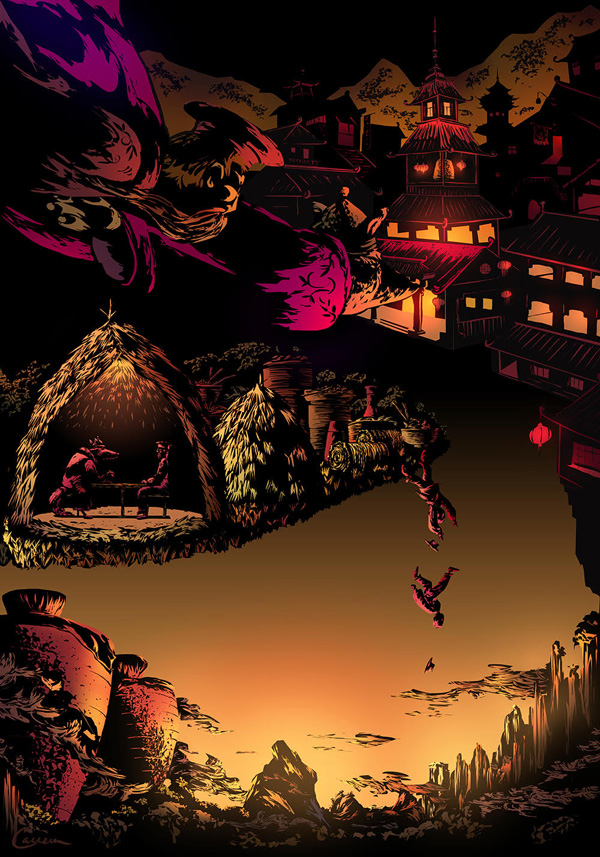
The Farmer by Philip Carrera from his book The Art of Mischief: Illustrating the World’s Most Notorious Troublemakers
_______
Have you been inspired in your creative practice by the Getty? We’d love to hear about your work. Share it with us on Instagram @gettymuseum, add it to our #GettyInspired site at getty.edu/inspired, or share it by email at inspired@getty.edu. Selected artists are also profiled here on the Getty blog.

See all posts in this series »

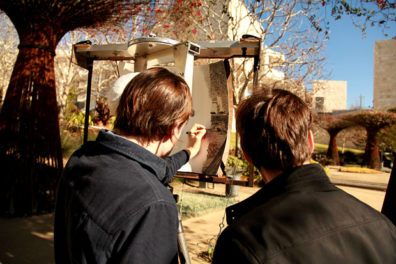


Comments on this post are now closed.